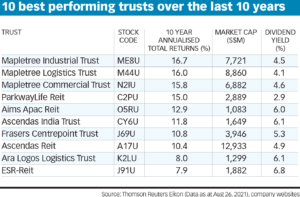
US News & World Report has an educational section that covers a range of topics including average first-year retention, graduate indebtedness, and faculty salaries. It also adjusts for regional differences in the cost of living. This is an excellent resource for anyone interested in higher education. However, you need to be aware of several things before making your final decision. Below, we'll look at some of the most important figures in US finance.
Average first-year retention rate
U.S. News' rating system evaluates colleges and universities using three components: average first year retention rate, average student loan, and average graduate indebtedness. The retention rates are an indicator of the school's ability to attract students. Average first-year student debt is also important. The average graduate indebtedness (or the total amount of federal loans owed) is the average debt for the graduating class of 2019 and 2020 bachelor's. Because the number of institutions receiving federal loan debt is small, this figure can be volatile.
U.S. News compares the first-year retention rates of schools that were in operation from the fall 2016-2017 to make comparisons. The five factors considered in the rankings are class size (faculty-student ratio), percentage of faculty and tenure length (from the first year to graduation). U.S. News considers retention rates as a whole in its ranking system, but many schools compare schools using multiple metrics.

Graduate indebtedness total
Prospective students and families are concerned about how much debt they will owe at graduation. One ranking factor concerns graduate indebtedness. This is the total amount of graduate debt a graduating class has incurred. It is equal to the median debt for all ranked schools. It is significant that so many graduates are currently in debt. There are approximately forty million students who have at the moment at least one outstanding loan.
Students who are not enrolled in colleges that rank high on U.S. News’ list of top colleges will not be burdened by the most student debt. However, not all institutions are so burdened with student debt. These institutions may not be as financially sound as other colleges and may not have a high debt burden compared to their peers. The College Scorecard website gives information on undergraduate students' average debt. A site is also available from the Department of Education that allows students to compare college debt in order to make sure they are choosing a college that offers quality education.
Average faculty salaries
According to the U.S. News, the average faculty salaries at the best universities in the country are the highest among those in the business and finance departments. The study examines faculty salaries at universities across the nation. It is remarkable to see the differences between the full professor salaries at these institutions as well as the salaries of assistant professors, associate professors, and associate professors. There are some changes, but the full professor salaries at the top universities remain the same. Five of the top 10 positions were held by the University of California System. Northwestern University climbed to the eighth spot, replacing University of Maryland (previously number-eight).
The survey also includes adjunct faculty salaries. Accordingly, the AAUP survey may need adjustment to include parttime faculty salaries. Surveys may also require institutions reporting pay data for adjuncts from a year earlier, which is easier to collect. Nevertheless, the AAUP continues to take into account the larger cultural conversation and report faculty salaries. However, it is important to note that adjunct faculty salaries are often low and not publicly reported.

Adjusted for regional differences in cost of living
The United States does have an official cost of existence index. However the Bureau of Labor Statistics publishes its Consumer Price Index (CPI), which is used to track changes in the costs of living over time. CPI data is sometimes used by some organizations for calculating a cost per capita index. Most cost of living indexes use a national average of 100 as the base, and assign different numbers to different regions based on how they compare to this figure.
These reports also include the prices for housing and utilities as well healthcare costs (including common procedures), entertainment, vehicle and vehicle insurance, fees, and food- and gas prices. For regional variations in cost of life, the costs are adjusted each year. In 2019, San Francisco had the highest cost of living, compared to Salt Lake City which had the lowest. Although cost of living can vary from one region to another, the United States has high medians and some areas are more costly than others.
FAQ
How can people lose money in the stock market?
The stock market is not a place where you make money by buying low and selling high. It's a place you lose money by buying and selling high.
The stock exchange is a great place to invest if you are open to taking on risks. They want to buy stocks at prices they think are too low and sell them when they think they are too high.
They believe they will gain from the market's volatility. But if they don't watch out, they could lose all their money.
What is the difference?
Brokers help individuals and businesses purchase and sell securities. They handle all paperwork.
Financial advisors are specialists in personal finance. They use their expertise to help clients plan for retirement, prepare for emergencies, and achieve financial goals.
Financial advisors may be employed by banks, insurance companies, or other institutions. They could also work for an independent fee-only professional.
Consider taking courses in marketing, accounting, or finance to begin a career as a financial advisor. Also, you'll need to learn about different types of investments.
Why is a stock security?
Security is an investment instrument whose value depends on another company. It can be issued as a share, bond, or other investment instrument. The issuer can promise to pay dividends or repay creditors any debts owed, and to return capital to investors in the event that the underlying assets lose value.
What is security in the stock market?
Security is an asset that generates income for its owner. Most common security type is shares in companies.
Different types of securities can be issued by a company, including bonds, preferred stock, and common stock.
The earnings per shares (EPS) or dividends paid by a company affect the value of a stock.
A share is a piece of the business that you own and you have a claim to future profits. If the company pays you a dividend, it will pay you money.
You can sell your shares at any time.
Statistics
- US resident who opens a new IBKR Pro individual or joint account receives a 0.25% rate reduction on margin loans. (nerdwallet.com)
- Ratchet down that 10% if you don't yet have a healthy emergency fund and 10% to 15% of your income funneled into a retirement savings account. (nerdwallet.com)
- "If all of your money's in one stock, you could potentially lose 50% of it overnight," Moore says. (nerdwallet.com)
- Our focus on Main Street investors reflects the fact that American households own $38 trillion worth of equities, more than 59 percent of the U.S. equity market either directly or indirectly through mutual funds, retirement accounts, and other investments. (sec.gov)
External Links
How To
How to Trade in Stock Market
Stock trading is the process of buying or selling stocks, bonds and commodities, as well derivatives. Trading is French for "trading", which means someone who buys or sells. Traders trade securities to make money. They do this by buying and selling them. This type of investment is the oldest.
There are many ways to invest in the stock market. There are three basic types of investing: passive, active, and hybrid. Passive investors are passive investors and watch their investments grow. Actively traded investor look for profitable companies and try to profit from them. Hybrid investors combine both of these approaches.
Index funds that track broad indexes such as the Dow Jones Industrial Average or S&P 500 are passive investments. This method is popular as it offers diversification and minimizes risk. Just sit back and allow your investments to work for you.
Active investing is about picking specific companies to analyze their performance. An active investor will examine things like earnings growth and return on equity. They will then decide whether or no to buy shares in the company. If they feel that the company is undervalued, they will buy shares and hope that the price goes up. On the other side, if the company is valued too high, they will wait until it drops before buying shares.
Hybrid investing is a combination of passive and active investing. Hybrid investing is a combination of active and passive investing. You may choose to track multiple stocks in a fund, but you want to also select several companies. You would then put a portion of your portfolio in a passively managed fund, and another part in a group of actively managed funds.